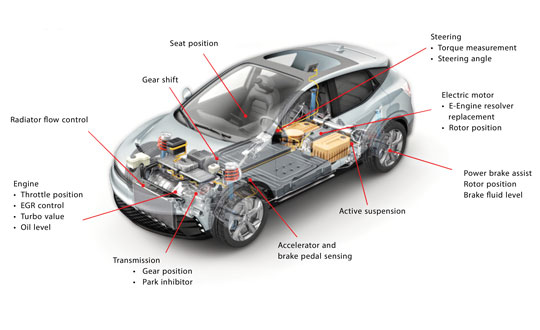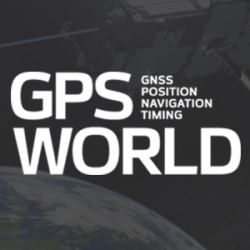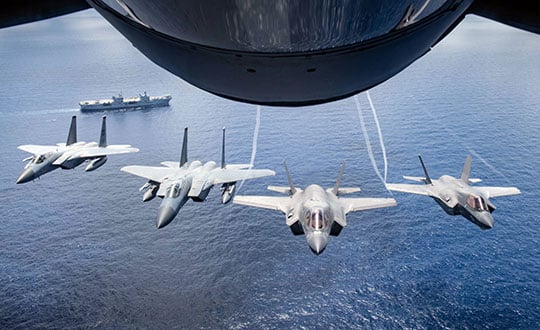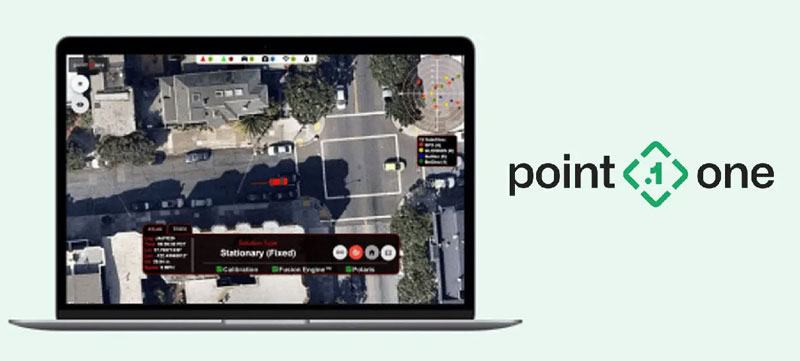The GNSS of Things, and a Galileo/Copernicus interface

A software offering an “open-source innovation platform for the GNSS of Things” won the Special Prize in the Galileo Masters competition. Another entry showed the opportunities that lie at the interface of Galileo and Copernicus, the EU’s Earth-observation satellite project. The UK government has just published its first ever space policy document, and I am amazed as well as somewhat surprised that it took so long.
Brits in Space
I was born in 1961, the year of the original spaceman, and just a few days old when Yuri Gagarin boarded Vostok 1 and launched the era of manned spaceflight. My childhood was vividly punctuated by the triumphs and disasters of the early days of our exploration of outer space. So I am amazed – and somewhat perplexed – to think that it is only now, 55 years later – that the first British taxpayer-funded astro/cosmonaut has made it into orbit! But congratulations to Major Tim Peake and our best wishes for his six-month mission on the International Space Station.
Even more amazing is that, coinciding with Major Peake’s flight, the UK government has just published the first ever UK Space Policy document. We Brits do consider ourselves to be pretty good at the old aeronautics and aerospace game, so again, it is amazing that we have not had a written space policy before now.
The good news is that, apart from articulating an ambition to establish a commercial ‘space port’ in an otherwise currently undisturbed part of rural England, the policy has a clear focus on innovation and the use of space-based solutions for public services and security.
Berlin innovation
Much European satellite innovation in the GNSS and Earth Observation sectors was on display at the Satellite Masters Conference and Awards Ceremony that took place in Berlin at the end of October. This annual event once again highlighted the wealth of creative people in the downstream GNSS community in Europe. As ever it was a joy to meet and talk to people young – often very young – and old who had genuine enthusiasm for the technical and commercial opportunities that GNSS technology is bringing and the ambition to bring these ideas to concrete fruition.
In particular the European Satellite Navigation Competition (ESNC), otherwise known as the Galileo Masters, has helped to foster this community. And ESNC 2015 was no exception.
For example, the recipient of the European GNSS Agency (GSA) Special Prize award at the Masters ceremony in Berlin was Rafael Olemedo. Rafael is a serial GNSS innovator and entrepreneur and his KYNEO concept is very much of the moment.
The Internet of Things (IoT) – the integration of uniquely identifiable devices on the internet – is one of the main current global technology themes and GNSS is integral to its success. Location based services and timing data are essential of IoT applications in particular as a means to control and monitor mobile IoT devices.
The basis of the KYNEO concept is a real need to be able to fast prototype applications and devices in the rapidly developing IoT field. Rafael describes KYNEO as an “open innovation platform for the GNSS of Things.”
As I said Rafael has been here before and is a previous winner of the GSA Special Prize. In 2012 he won with his 3DSound idea: a personal navigation solution based on the integration of acoustic binaural technologies (i.e. 3D sounds) and GNSS technologies to guide people along a predefined track. His insight with KYNEO is that many different products and services are looking for similar solutions for positioning that can be flexibly adapted in different contexts. This is particularly so for developers in the IoT field.
KYNEO is essentially an Arduino-compatible board that allows developers to rapidly and flexibly build their own solutions based on open–source software. Arduino is an open-source electronic prototyping platform for the creation of interactive electronic objects.
Rafael highlights the flexibility of the KYNEO concept. “The KYNEO concept can easily provide a portfolio of functionalities in terms of positioning technologies, connection with other sensors, memory options, networking and communications,” he says. “Application developers can use it as a ‘black box’ or get more involved to customise the unit.”
The KYNEO product is designed to be low-cost and competitive, but Rafael sees associated services as being the main money-spinner for his company. “There will be some profit in selling the products themselves, but these sales will open doors to services and consultancy,” he explains. “The product will give visibility to KYNEO and the technology support and consultancy services we provide.”
It was also great to briefly meet up with the team behind the VADASE project who have developed a real-time GNSS monitoring system for seismology that I first covered in this column in September 2014. Dr Gabriele Colosimo and colleagues at Rome’s “Sapienza” University talked about their successful efforts to translate what had originally been an academic exercise to an industrial application. Their motto in commercialising the system was similar to Rafael’s being “keep it fast, keep it simple” and this year Leica Geosystems – for whom Gabriele now works – have launched a stand-alone receiver with the VADASE computational engine integrated. The receiver is able to compute real time fast displacements autonomously in man-made and natural structures.
The Satellite Masters conference itself featured extended discussion of the leveraging of satellite-derived data and other space solutions for business and society. The amount of data that is, and will, be generated by space-based systems is quite incredible and possibly overwhelming. This is especially so for Earth Observation sector. How useful and timely information is derived from this torrent of data is a major challenge. As one participant put it: “Data is worth only as much as the insight you can gain from it.”
One approach was demonstrated by the excellent GEO-VISION application that also showed the opportunities that lie at the interface of Galileo and Copernicus. Dr Harald Skinnemoen from AnsuR Technologies claims the project outcomes can provide visual situational awareness capability anywhere in the world, with the aim of enabling “observation to action”, within one minute worldwide. Quite an ambition.
He sees two main markets: humanitarian and financial. Interestingly this research project is releasing products and applications to the market as it progresses. The project’s output was used, for example, by the UN to map the effects of the earthquake in Nepal and help prioritise their operations there. This provides valuable feedback to the research team and also means that investment for future development is being attracted from the start.
Up in the air
Of course all these innovative applications rely on there being satellites up there to provide the infrastructure. And 2015 has been a very busy year for Galileo launches. The three launches in the year have effectively doubled the constellation in-orbit.
The recent successful launch on 17 December from Kourou provides the next two satellites (named Andriana and Liene – aka FOC 11 and 12) that will be used to launch Galileo Early Services. This last launch was almost ten years on from first ever Galileo launch. Galileo GIOVE-A took off on 28 Dec 2005 from the Baikonur facility to lay claim to the frequencies allocated to Galileo by the ITU and to technically demonstration of the concept. It has been slow progress but perhaps we are almost there?
A press conference on the eve of the launch discussed the future programme for Galileo, the status of the in-orbit satellites and Early Service provision.
Carlo des Dorides confirmed that the nine fully viable satellites in orbit (including the two launched on 17 December) represent the “reduced constellation” that will deliver Galileo Early Services during the second half of 2016. The two satellites launched in September have almost completed their in-orbit testing and are on schedule to begin providing navigation signals during January. Carlo said the Early Services would consist of the Open Service (OS), Search and Rescue (SAR) and the Public Regulated Service (PRS) and provide proof of concept testing for Commercial Services (CS).
These services will provide 100% of the accuracy to be expected from the full constellation but clearly cannot provide 100% continuity and availability. There are in fact 12 satellites in orbit but two are in eccentric orbits and one has a power problem.
The European Commission’s Galileo Programme Manager Paul Flament talked about the two off-orbit Galileo satellites. Doresa and Milena are now in improved but eccentric orbits and a further few months of testing is being undertaken to confirm the contribution they can make to the Galileo GNSS services. But he confirmed that it was “100% sure” that they be contributing to the SAR and OS services in 2016. The only constraint was the Public Regulated Service (PRS) where security concerns meant they would definitely not contribute.
With the four IOV satellites manufactured by Astrium and the 22 FOC satellites ordered from OHB that makes a total of 26 satellites – all to in the sky by 2018. You need 24 for a full constellation so with three satellites at less than 100% operational function currently – I make that one short. So it was good to hear that the European Commission will be publishing an open tender for the provision of eight more Galileo FOC satellites in the very near future. Paul Flament emphasised that European Union rules meant that a tender of this value had to be offered to the whole market. It will be interesting to see if more than one serious bid is received.
During 2016 there is likely to be only one Galileo launch said current ESA Director of Galileo Programmes and Navigation-Related Activities Didier Faivre. He indicated that one Ariane 5 launch with the new four satellite dispenser would happen in a launch window between September and November. He indicated that there was an outside possibility of a second Ariane 5 launch in this window, but that depends on the overall launch calendar at the European spaceport. He was confident that the production and test chain for the Galileo satellites was working very well and could fulfil a second Ariane launch if an appropriate window was made available.
This was Didier’s last Galileo launch as he will hand over to Paul Verhoef in 2016 (see below).
Paul Flament also revealed that negotiations for possible US (and Norwegian) access to the Galileo PRS may start soon as Common Minimum Standards (the who and what legal and regulatory basis for users and receiver manufacturers etc.) had been agreed by EU Member States. This opens the way for the Commission to receive a mandate from the European Council to start negotiations with third party countries about participation in this government-only secure service.
New faces, old faces
The European GNSS world has seen a change of command over the autumn/ fall period. On 21 November the European Space Agency (ESA) Council approved new ESA Director General Johann-Dietrich Woerner’s proposal for his senior management team.
Jan Woerner himself, of course, took up duty as ESA Director-General just six months ago on 1 July 2015. He seems to be bringing a breath of fresh air to ESA and is continuing to write a regular blog offering insights on his thinking. He first started the blog in 2010 when Chairman of the German Aerospace Centre (DLR).
Of most importance to European GNSS stakeholders was the naming of Paul Verhoef as the new Director of Galileo Programmes and Navigation-Related Activities at ESA replacing Didier. Dutch national Verhoef is a former head of unit for satellite navigation programmes at the European Commission. He served in this position between 2005 and 2011 and was heavily involved in shaping the Galileo programme as we see it today. More recently he has been working as Head of Unit on renewable energy in the Commission’s Research and Innovation DG. Verhoef takes up his new role early in 2016.
To complete the recent appointment news Carlo des Dorides was re-elected by unanimous vote as the Executive Director of the European GNSS Agency (GSA) on 30 October. His second four-year term at the helm of the GSA will focus on using the organisation that he has essentially built from the ground up to achieve the best possible return on Europe’s investment in this area.
I hope that with all the players in place they can work together for a common goal. As Jan Woerner puts it at the end of a recent blog on the outcomes of the EU-ESA Space Council:
“My sincere hope is that all future developments between the different actors in the European space sector are dictated by their respective expertise rather than any form of vanity or power games. The citizens of Europe have a right to expect from all of us that we use their money as efficiently as possible, avoiding any duplication of efforts and pointless struggles over position and status. This can be summarised under the motto United Space in Europe.”
A statement that I feel all stakeholders in the European space community – and GNSS stakeholders in particular – can fully support.
Best wishes to all our readers for 2016 – the year in which we all hope to see (at last) Galileo Early Services available.
A bientȏt as they say in these parts.
















Follow Us